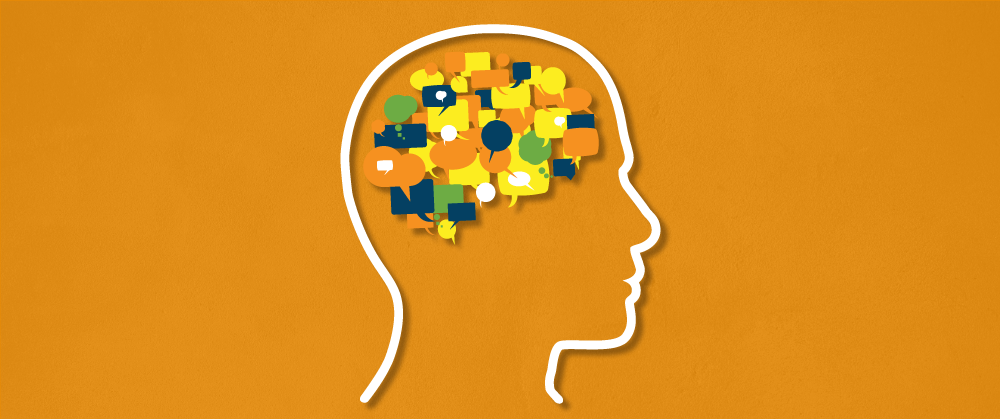The latest special issue from the American Journal of Speech-Language Pathology (AJSLP) focuses on contributions from The 47th Annual Clinical Aphasiology Conference. AJSLP is proud to publish a sample of the research presented there.
The 10 articles are divided into three main topic areas: (1) enriching communicative environments for people with communication disorders, (2) aphasia treatment, and (3) discourse production (in aphasia and traumatic brain injury). Two articles of interest are highlighted below.
“Enriching Communicative Environments: Leveraging Advances in Neuroplasticity for Improving Outcomes in Neurogenic Communication Disorders” is a collaboration between co-authors Julie A. Hengst and Melissa C. Duff and keynote speaker Theresa A. Jones. Special Issue Editor Margaret Lehman Blake (2019) explains, “Dr. Jones presented work on neural plasticity in mice and her findings related to optimizing change after brain injury. Together, the three authors expanded upon those ideas to link them to communication outcomes” (p. 215).
Another highlight of the collection is an article by Shauna Berube, Jodi Nonnemacher, Cornelia Demsky, Shenly Glenn, Sadhvi Saxena, Amy Wright, Donna C. Tippett, and Argye E. Hillis. In this article, the authors evaluate an updated version of the “Cookie Theft” picture, often used to rate aphasia severity. The authors worked with a professional artist to create an updated, more colorful image, and they asked individuals with aphasia and a control group to describe the photo, assessing their responses. “Berube and colleagues have created a revision of the classic Cookie Theft picture, removing gender stereotypes,” Blake says. “Additionally, content is more balanced between the left and right sides of the picture to provide a better stimulus for patients with unilateral neglect.”
Thanks to Margaret Lehman Blake for compiling this important issue! You can read the entire issue here or explore the articles below.
References
Blake, M. L. (2019). The 2017 Clinical Aphasiology Conference: A letter from the editor. American Journal of Speech-Language Pathology, 28, 215. https://doi.org/10.1044/2019_AJSLP-18-0149
Explore This Issue
Berube, S. K., Nonnemacher, J., Demsky, C., Glenn, S., Saxena, S., Wright, A., . . . Hillis, A. E. (2019). Stealing cookies in the twenty-first century: Measures of spoken narrative in healthy versus speakers with aphasia. American Journal of Speech-Language Pathology, 28, 320–328. https://doi.org/10.1044/2018_AJSLP-17-0131
Blake, M. L. (2019). The 2017 Clinical Aphasiology Conference: A letter from the editor. American Journal of Speech-Language Pathology, 28, 215. https://doi.org/10.1044/2019_AJSLP-18-0149
Brown, J. A., Wallace, S. E., Knollman-Porter, K., & Hux, K. (2019). Comprehension of single versus combined modality information by people with aphasia. American Journal of Speech-Language Pathology, 28, 278–292. https://doi.org/10.1044/2018_AJSLP-18-0149
Bunker, L. D., Nessler, C., & Wambaugh, J. L. (2019). Effect size benchmarks for response elaboration training: A meta-analysis. American Journal of Speech-Language Pathology, 28, 247–258. https://doi.org/10.1044/2018_AJSLP-17-0152
Evans, W., Hula, W. D., & Starns, J. J. (2019). Speed–accuracy trade-offs and adaptation deficits in aphasia: Finding the “sweet spot” between overly cautious and incautious responding. American Journal of Speech-Language Pathology, 28, 259–277. https://doi.org/10.1044/2018_AJSLP-17-0156
Gilmore, N., Ross, K., & Kiran, S. (2019). The intensive cognitive-communication rehabilitation (ICCR) program for young adults with acquired brain injury (ABI). American Journal of Speech-Language Pathology, 28, 341–358. https://doi.org/10.1044/2018_AJSLP-17-0153
Hengst, J., Duff, M. C., & Jones, Theresa A. (2019). Enriching communicative environments: Leveraging advances in neuroplasticity for improving outcomes in neurogenic communication disorders. American Journal of Speech-Language Pathology, 28, 216–229. https://doi.org/10.1044/2018_AJSLP-17-0157
Hudspeth Dalton, S. G., & Richardson, J. D. (2019). A large-scale comparison of main concept production between persons with aphasia and persons without brain injury. American Journal of Speech-Language Pathology, 28, 293–320. https://doi.org/10.1044/2018_AJSLP-17-0166
Leaman, M. C., & Edmonds, L. A. (2019). Conversation in aphasia across communication partners: Exploring stability of microlinguistic measures and communicative success. American Journal of Speech-Language Pathology, 28, 359–372. https://doi.org/10.1044/2018_AJSLP-17-0148
Lindsey, A., Hurley, E., Mazeiko, J., & Coelho, C. (2019). Follow-up on the Story Goodness Index for characterizing discourse deficits following traumatic brain injury. American Journal of Speech-Language Pathology, 28, 330–340. https://doi.org/10.1044/2018_AJSLP-17-0151 Quique, Y. M., Evans, W. S., & Walsh Dickey, M. (2019). Acquisition and generalization responses in aphasia naming treatment: A meta-analysis of semantic feature analysis outcomes. American Journal of Speech-Language Pathology, 28, 230–246. https://doi.org/10.1044/2018_AJSLP-17-0155









